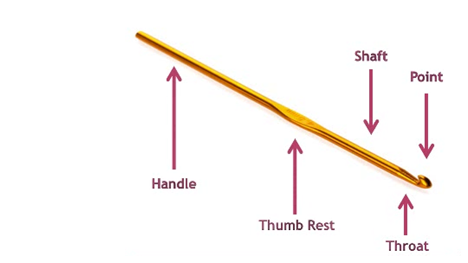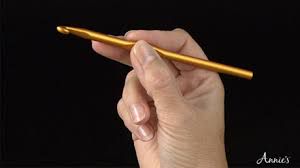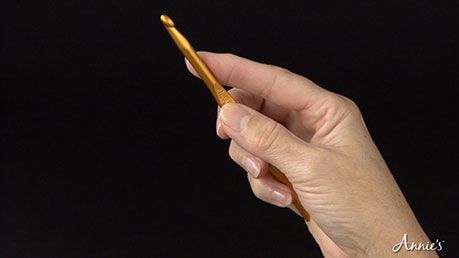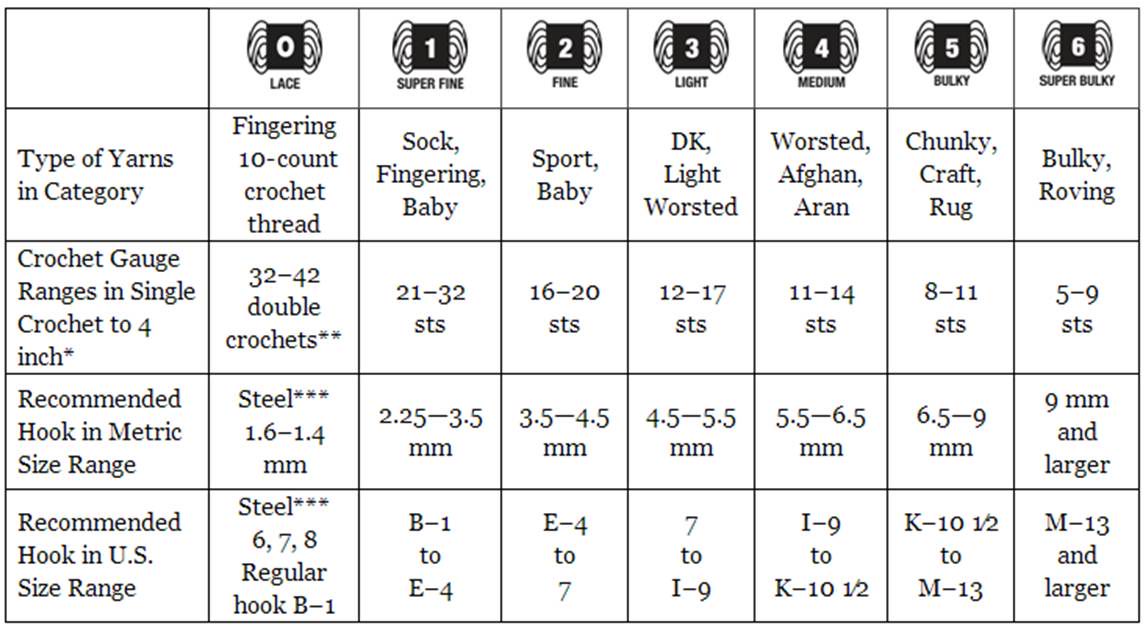Hooks 101
Crochet hooks are to crochet as knitting needles/looms are to knitting. A crochet hook is a very nifty tool that can do so much without having any moving parts. Below are the parts of one:

1. The point of a crochet hook: Used to be inserted into the previous stitch to make a new one.
2. The throat: Holds your working yarn on the hook.
3. The shaft holds the other loops on the hook and its diameter determines the size of the hook.
4. The thumb rest and handle: Used to hold the hook. (The thumb rest and handle might also be called the handle and base respectively.)
There are two ways to hold a crochet hook.

Like a pencil

Like a knife
I defer to the knife method; however, I know how to do both and still accomplish the same task. Holding it like a pencil will make your wrists sore after a while, however, so I recommend the knife hold.
The hook size of a project matters because of two things: weight and gauge. The weight of yarn determines how thick the yarn is, requiring a bigger hook. The gauge will be covered later, but know that it's important for making sure your project turns out the right size. For now, let's look at a common chart of hook measurements:

Here we see the main yarn weights, crochet hook sizes, and gauges. As for the gauge, always use the gauge stated in your pattern, and don't count on this gauge to be exact - it's an estimation, especially given all the different materials of yarn available. Crochet hooks are measured internationally using the diameter of the shaft in millimeters. I prefer the metric system because the US system is complicated and awkward.
As for the recommended hook sizes, these are estimations. Always use the hook stated in your pattern, down to the quarter millimeter, unless the hook is too small for the gauge. Then adjust it by a quarter-millimeter in whichever direction you need. Lastly, I recommend using aluminum hooks. They're cheap and you can buy them in bulk for only around $10 USD, and they contain all the basic sizes you need for the different yarn weights. Bone and wood hooks are uncomfortable to hold and very expensive most places.
When working with yarn, my advice is simple: trust the hook. Your yarn may slide off from time to time, but usually, you can trust that the hook will hold your yarn tight until you've slid the loops through. Just pull the hook through, and in time you'll be a natural.
Bạn đang đọc truyện trên: Truyen247.Pro